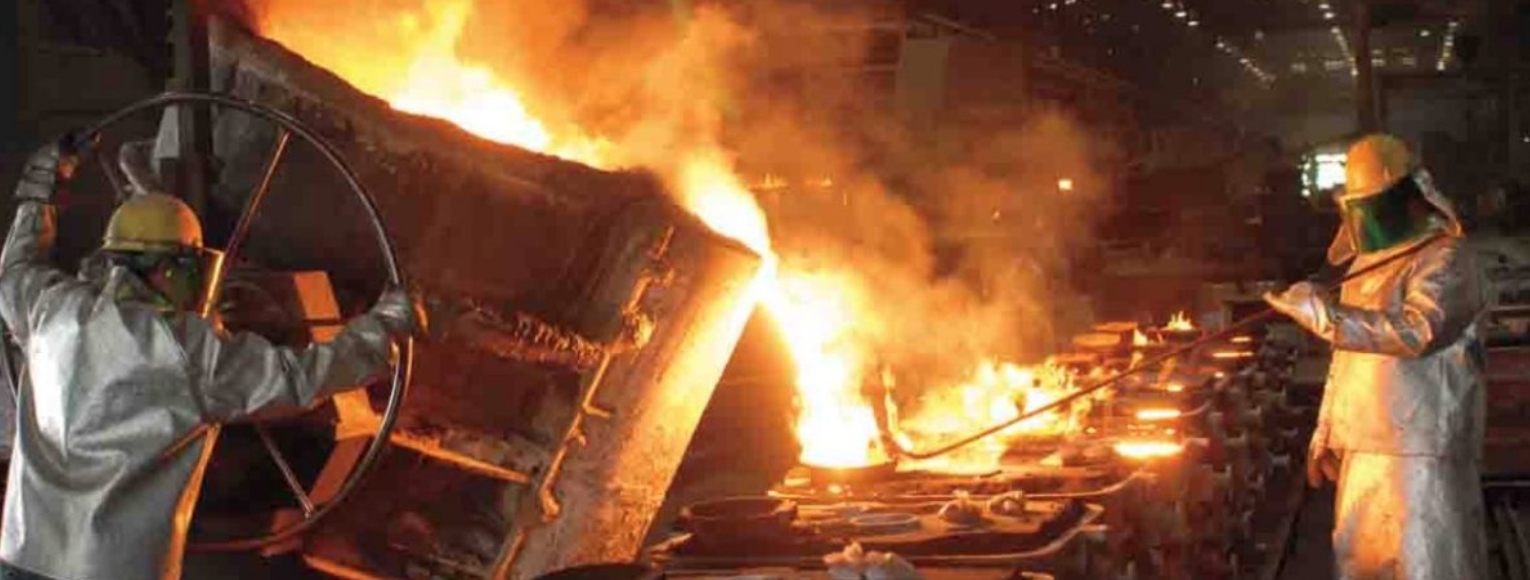
Steel casting is a vital industrial process, producing components essential for various applications, from automotive to construction. However, the steel casting process has significant environmental impacts, necessitating an examination of these effects to promote sustainability.
Overview of the Steel Casting Process
The steel casting process involves several stages, each contributing differently to the environmental footprint. The primary stages are:
- Raw Material Extraction and Preparation: Iron ore and other raw materials are extracted and processed.
- Melting and Refining: Raw materials are melted in furnaces, often using fossil fuels.
- Mold Preparation: Molds are created using sand or other materials.
- Casting: Molten steel is poured into molds.
- Cooling and Solidification: Castings cool and solidify in the molds.
- Finishing: Castings are cleaned, machined, and inspected.
Environmental Impact Analysis
1. Raw Material Extraction and Preparation
Impact on Land and Biodiversity: Mining activities for extracting iron ore lead to deforestation, habitat destruction, and soil erosion. Large-scale mining operations significantly disturb the natural landscape.
Water Usage and Pollution: The process consumes vast amounts of water, and mining activities often result in water pollution due to the release of harmful chemicals and heavy metals.
2. Melting and Refining
Energy Consumption: Melting iron ore and scrap steel requires substantial energy, predominantly sourced from non-renewable fossil fuels. This stage is one of the most energy-intensive in the steel casting process.
Air Emissions: The refining process emits greenhouse gases (GHGs) such as carbon dioxide (CO₂), sulfur dioxide (SO₂), and nitrogen oxides (NOx), contributing to climate change and air pollution.
3. Mold Preparation
Sand Usage: The creation of molds, primarily using sand, leads to significant sand consumption. Sand mining can cause environmental degradation and loss of riverbeds.
Waste Generation: Spent foundry sand, if not properly managed, can lead to soil contamination and disposal issues.
4. Casting
Emissions and Residues: During casting, various emissions and residues, including particulate matter and volatile organic compounds (VOCs), are released, affecting air quality.
5. Cooling and Solidification
Water and Energy Usage: Cooling requires substantial water and energy, further contributing to resource depletion.
6. Finishing
Waste Generation: Finishing processes, such as grinding and machining, generate metal shavings and dust, which need proper disposal to prevent environmental contamination.
Quantitative Environmental Impact
Below is a table summarizing the key environmental impacts of the steel casting process:
| Stage | Environmental Impact |
|---|---|
| Raw Material Extraction | Land degradation, water pollution, high water usage |
| Melting and Refining | High energy consumption, GHG emissions |
| Mold Preparation | Sand consumption, waste generation |
| Casting | Emissions of particulate matter and VOCs |
| Cooling and Solidification | High water and energy usage |
| Finishing | Waste generation (metal shavings and dust) |
Strategies for Mitigating Environmental Impact
- Energy Efficiency: Implementing energy-efficient technologies and processes can significantly reduce energy consumption and emissions.
- Renewable Energy Sources: Utilizing renewable energy sources, such as solar or wind power, for melting and refining can mitigate GHG emissions.
- Recycling and Reuse: Promoting the recycling of steel scrap and reusing spent foundry sand can reduce resource depletion and waste generation.
- Waste Management: Proper waste management practices, including the treatment and disposal of hazardous materials, can minimize environmental contamination.
- Water Conservation: Implementing water conservation measures, such as closed-loop cooling systems, can reduce water usage and pollution.
- Alternative Materials: Researching and developing alternative, sustainable materials for molds can decrease the environmental impact associated with sand usage.
Conclusion
The steel casting process is indispensable for modern industrial activities, but it carries significant environmental implications. By understanding and addressing the environmental impact of each stage of the steel casting process, industries can move towards more sustainable practices. Through energy efficiency, renewable energy adoption, recycling, and improved waste management, the environmental footprint of the steel casting process can be minimized, contributing to a more sustainable future.
Key Takeaways
- The steel casting process involves multiple stages, each with distinct environmental impacts.
- Major environmental concerns include land degradation, high energy and water consumption, air emissions, and waste generation.
- Implementing sustainable practices can significantly mitigate these environmental impacts, promoting a greener steel casting industry.
